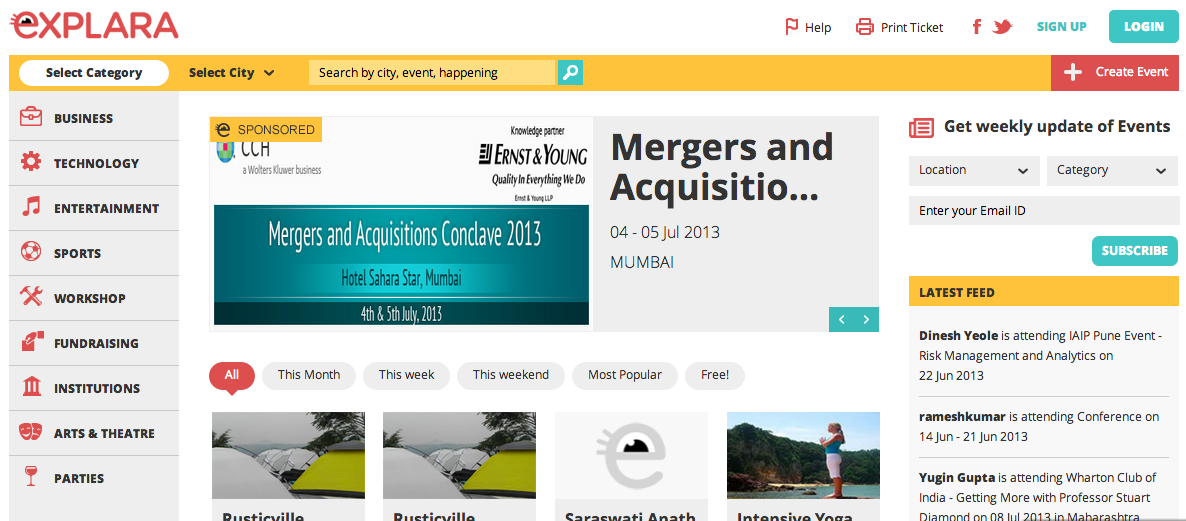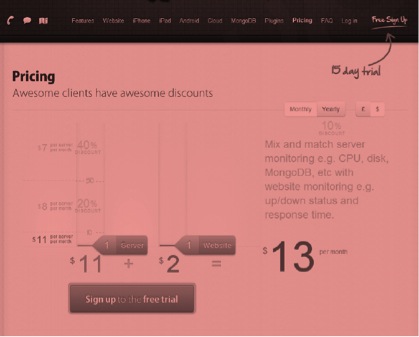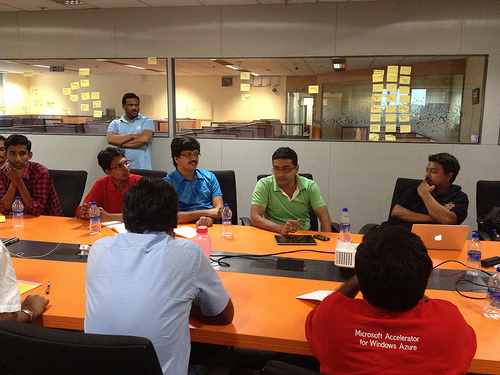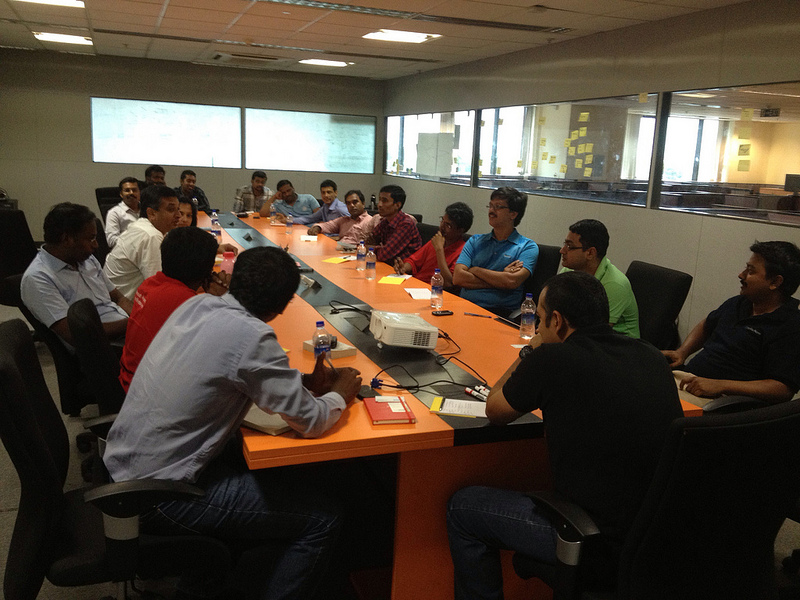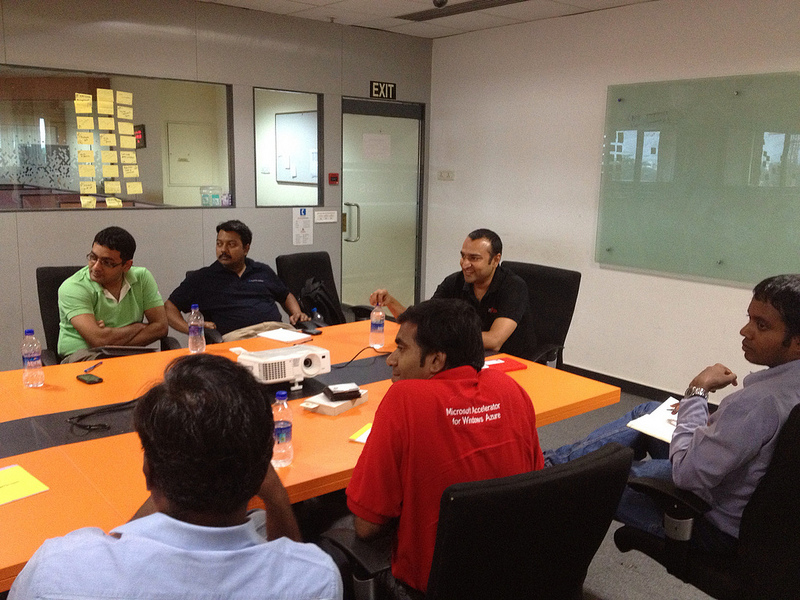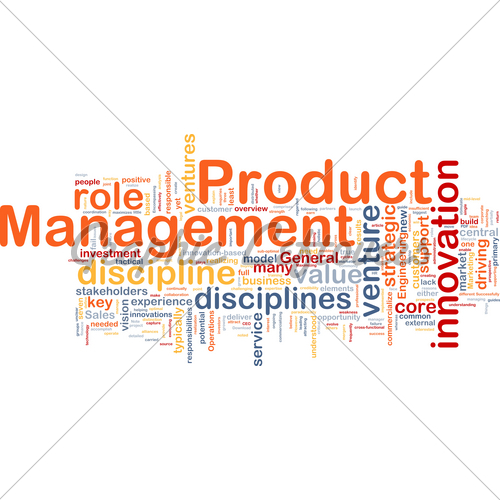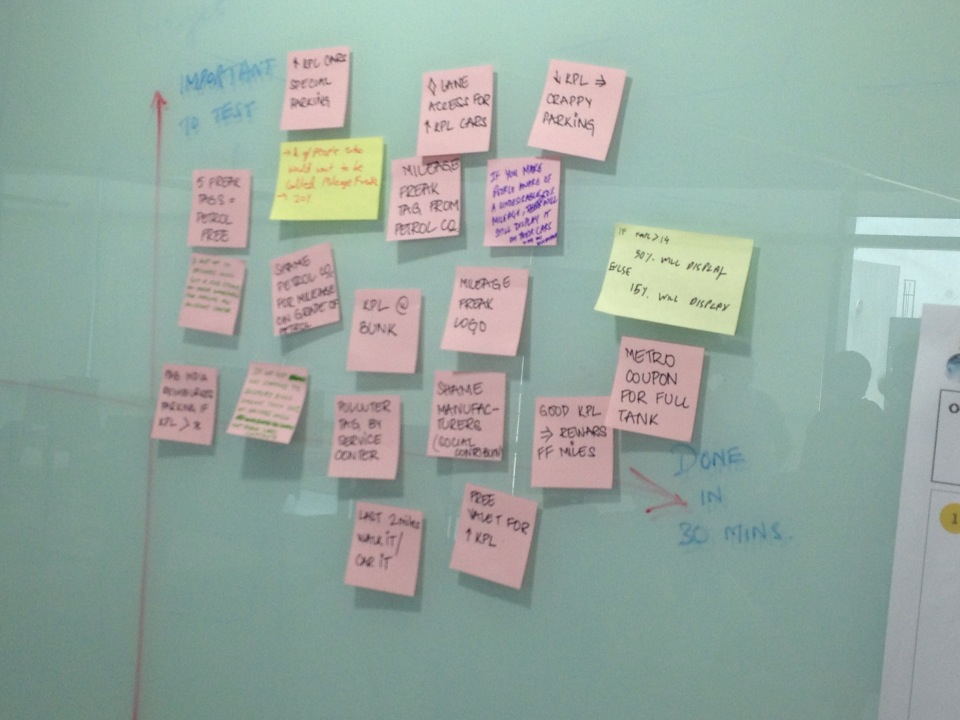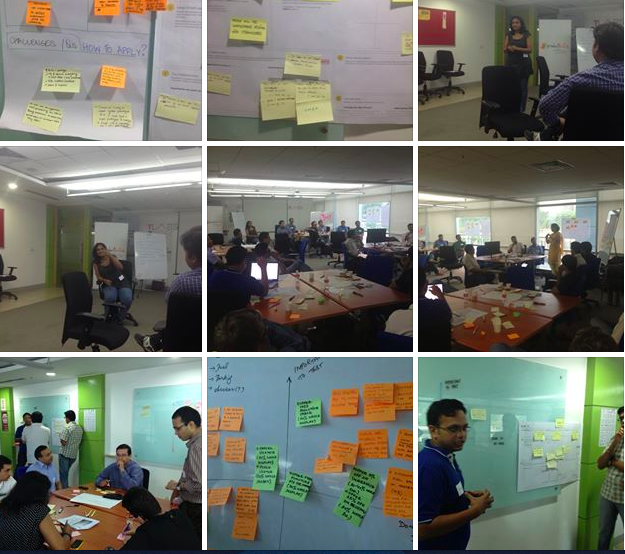Aurus Network was founded in 2010 with the vision to make quality education accessible to masses at affordable prices. It is revolutionizing the way distance/online education is delivered. Aurus offers CourseHub, its flagship product, which is a cloud-based solution for educational institutions (higher education, test prep and training,schools, etc.) to capture, store and deliver (live or on-demand) lectures online. The company has been funded by Indian Angel Networks and is the recipient of Microsoft Bizspark 2012 Startup Challenge in cloud category. This is a review of their flagship product CourseHub and the company.
Introduction
When I was in college and bunked classes (which was fairly often; it was hard to get up for 8 am classes), what usually got me through the course were the notes photocopied from one of the studious guys of the class. It was not the best solution, but was good enough. Then, in my 3rd year, my college introduced a special studio classroom where one of the course professors used to hold his lectures – a sound-proof, sanitized room where the professor used to write on a paper with marker which would show up on screen for us, and for recording. The recording was supposed to be available as a bunch of video cassettes (yes, I am that old!) in the library. It was painful to attend these classes because they felt so unlike a classroom, and of course, it was too complex to watch these recordings so I never watched any, and photocopied notes continued to save the day.
I was 15 years too early! If it was 2013, I probably would be sitting in a regular classroom whose lectures were being recorded, and recordings were available right after the class, on my course portal online, in an easy-to-consume format on the various devices I own. Recorded (and indexed) lectures would allow me to have lectures-on-demand, which is so cool.
This is what Aurus Network offers through its flagship product CourseHub. It is a cloud-based solution for educational institutions (higher education, test prep and training schools, etc.) to capture, store and deliver (live or on-demand) lectures online. CourseHub is also offered to corporates to manage remote training sessions and schools for capturing their classes.
Aurus Network was founded in 2010 by Piyush Agrawal and Sujeet Kumar, and is based in Bangalore.
The Product
Usage Scenarios
There are 3 primary usage scenarios for CourseHub:
- Lecture Capture: A lecturer captures his/her lecture for offline viewing by students or for creating blended learning content (for MOOC or other delivery mechanisms).
- Self-paced learning: A lecturer’s class is recorded to be viewed later by students to allow them to review the content at their own pace. Lecturer can edit the video and add pop quizzes and assessments online. This is usually used by universities.
- Extend the classroom: In this scenario, a lecturer’s class is streamed in real-time to remotely located classrooms or students. This allows the lecturer to have a very large classroom and have it closer to where the students are, without spending time in physical travel or money to build a single-location large classroom. This is usually used by training and test preparation centers.
For all of these scenarios to work, the capture device needs to be set up in a studio or classroom, which is a 1-time activity. This is typically done with a server class machine connected to internet via high speed broadband connection (higher the speed, better is the quality of video streamed and stored) and a capture device (HD camera and microphone) connected to the machine.
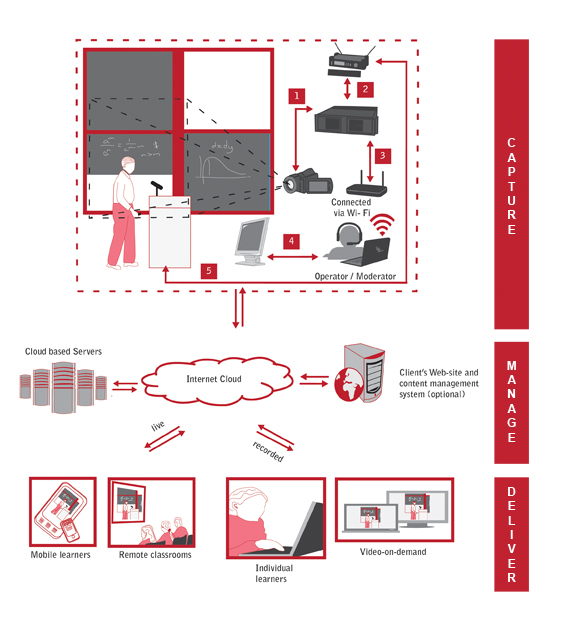
Development
The product was conceptualized in Nov 2010 in response to the problem posed by their first client. Their V1 was released in Nov 2010 and V2 in Feb 2011 with the first deployment and roll-out to 10 centers across India. Their tech team comprises of about 10 people, who are working on various technologies like video compression, video streaming, computer vision, large scale load balancing and engaging front end technologies.
Most of the innovation in the product has been achieved by applying technically simple but important insights about customer behavior and preferences. For e.g., one of the USPs of the solution is that they are able to deliver almost HD quality videos at as low as 200 Kbps, while other conventional solutions (web conferencing, video conferencing) require atleast 1 Mbps or more for the same. This has been achieved by prioritizing the encoding parameters which matter more for the viewer while watching educational videos (like clear audio, sharp writing etc.) rather than doing a one-size fits all kind of video encoding.
Features
Some of the product features are as follows:
- Record video with any HD camera and microphone
- Enable automatic focusing on teacher with Intelligent software based tracker
- Teachers can teach in their natural style
- Schedule captures in advance
- Automatic archiving to create media library in the cloud
- Integration with client’s website
- Integration with Learning Management Systems like Moodle, Blackboard, etc.
Differentiators
There are a few standout features in the product which are well worth the mention:
- They can deliver HD video quality at 200Kbps, which makes this available to all students who have a broadband connection. Other solutions use much higher bandwidth (around 1 Mbps in some cases). The reason they are able to do this is because they can optimize their compression algorithms using their knowledge of what is important for students (clear audio and writing is much more important than clearly visible instructor for example).
- No human intervention is required (after initial setup) to capture, store and deliver lectures, they have fully automated the solution (including tracking the presenter, managing connectivity disruption, etc.).
- It is a cloud-based solution, so clients can try out their solution without any hardware setup.
- Aurus provides a home-grown Learning and Content Management System which allows their clients to manage users and lecturers, edit video lectures, and add quizzes and assessments to the videos. This means that the clients get a complete product.
Market Adoption
Typical market for CourseHub in India are test preparation and training institutes like Career Point, Career Launcher, etc. and universities. CourseHub is sold on a monthly/yearly subscription model, for example Rs. 20K a month can get you 500 hours of lecture time (1 lecture + 99 students in a 1-hour lecture will constitute 100 hours of lecture time) and 50GB of storage (500 hours will fit into 50GB). However, for someone in the market for such a solution, there are many options to choose from:
- VSAT based classrooms (Hughes is the biggest player) – These are expensive to set up and require dedicated hardware, but offer highly reliable infrastructure
- Internet-based classrooms (like Aurus) – Some of these require expensive studio setup, while others, like Aurus, can work with regular hardware.
- Ad-hoc systems: You can use youtube (or other video streaming sites), Google Hangouts and some local capture method to enable a large part of functionality of capture, store and distribute, and save some money. Operational hassle will be larger.
- No system: this is still not a critical need for educational institutes and a large number of these institutes just don’t have any solution in place.
For all these solutions, technology is an important piece, but so is the overall package (that includes setup, operations, essentially IT-free solution), since the clients are not likely to be tech-savvy enough to manage these technological solutions.
Currently, Aurus is the technology solution provider of type #2 – allowing their clients to create internet-based classrooms. They have about 30 clients out of which around 20 are actively using their system. They have a healthy pipeline of future deals, sales cycle tends to be long and seasonal (because of academic session dependency).
The Roadmap
With the goals of capturing more clients in India in different segments (Corporate, Training and Test Prep, Schools) and also expanding outside India, Aurus has an ambition pipeline of features and innovations.
Product Roadmap
Over next 12 months or so, Aurus intends to deliver the following to its clients:
- Launching a completely Do-It-Yourself version of CourseHub, which will allow institutes based out of India to use the product
- Launching more features to allow professors/trainers to effectively analyze student performance and take pro-active actions
- For professors, adding multiple ways to lecture capture in their classrooms – using a dedicated capture appliance, an android app or manual uploading
Technology Roadmap
Aurus hopes to deliver following technology enhancements in this period:
- Enhanced Capture – Enhance and decouple capture process from software so that the solution can work with any kind of capture device and hence can allow them to go global. This includes allowing the use of high-end camera (which ship with Android OS) and remotely controlling it from server through an Android app.
- Deep LMS integration – Current LMS integrations are very shallow since it uses LTI. Deeper LMS integrations will enable more complex use cases to be supported.
- API solution – Allowing API level access to the video catalog to enable integration into client’s portal will allow CourseHub to be more tightly integrate with client portals.
Competitive Landscape
Companies offering such a solution (capture, store and distribute – live or on-demand) are very hot in US. Echo360 is a Steve Case backed venture that focuses purely on universities and offers socializing the learning (learn in groups and collaborate using social tools) and flipping the classroom (use classroom to discuss and clarify doubts rather than lecturing). Sonic Foundry is a public company, and Tegrity is a McGraw Hill company, both offering solution similar to CourseHub.
One of the reasons for this space being hot is the fact that flipping the classroom is becoming the craze, and with MOOC (Massively Open Online Course) also being the next big thing; capture, store and distribute of video lectures suddenly seems like a key technology piece to allow everyone to offer a MOOC.
In India, it is still early days for flipping classrooms and offering MOOCs. CourseHub is primarily being used to extend the classroom, and make star lecturers available in remote classrooms, in addition to using it for self-paced learning by making recorded lectures available for later viewing. However, as Indian universities catch up to these concepts, Aurus seems to be well-positioned to be a leader in the space if it plays its cards well.
The Road Ahead
If I have to go to college again, I will probably bunk again (while managing the attendances somehow since they are mandatory now). When I do so, I will probably still go for photocopied notes because they are so brief and quick to go through. I would really love to look up appropriate pieces of short video clips of the lecture when I get stuck in the notes so having notes and videos cross-indexed will be so useful; also useful will be the ability to find other lectures on the same micro-topic and try to really understand it from different perspectives. Essentially, videos become any other type of content which can be searched, used and mashed up together to create learning assets that are reusable and easily consumable.
Aurus is a pure technology provider in education space. It becomes apparent when you go through their solutions, their brochure, or the cool features they showcase on their website – they are technology-heavy. However, education sector doesn’t yield itself well to pure technology players, primarily because technology is hard to use, and very few institutes have technical/IT teams on their rolls. So what they need is complete solution (including service, personnel, etc.) so that it becomes plug-and-play for them. Aurus needs to be on top of its clients’ complete technology needs and should be willing to offer various value-added services.
Blended learning holds lots of potential, be it universities, training institutes, corporates or schools. Aurus seems to be well poised to help them deliver on this promise through technology.


